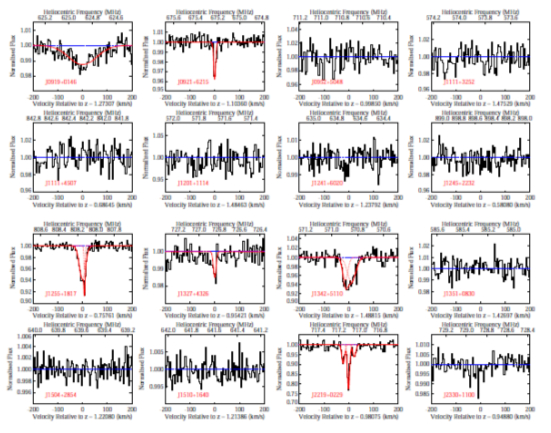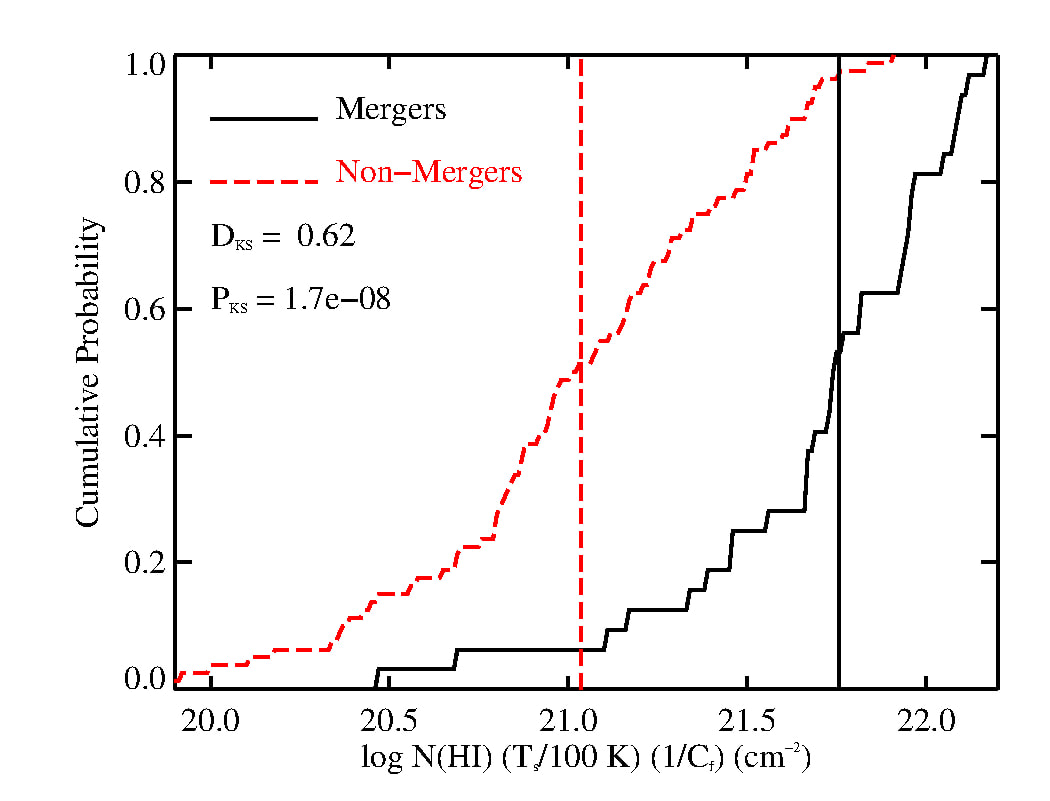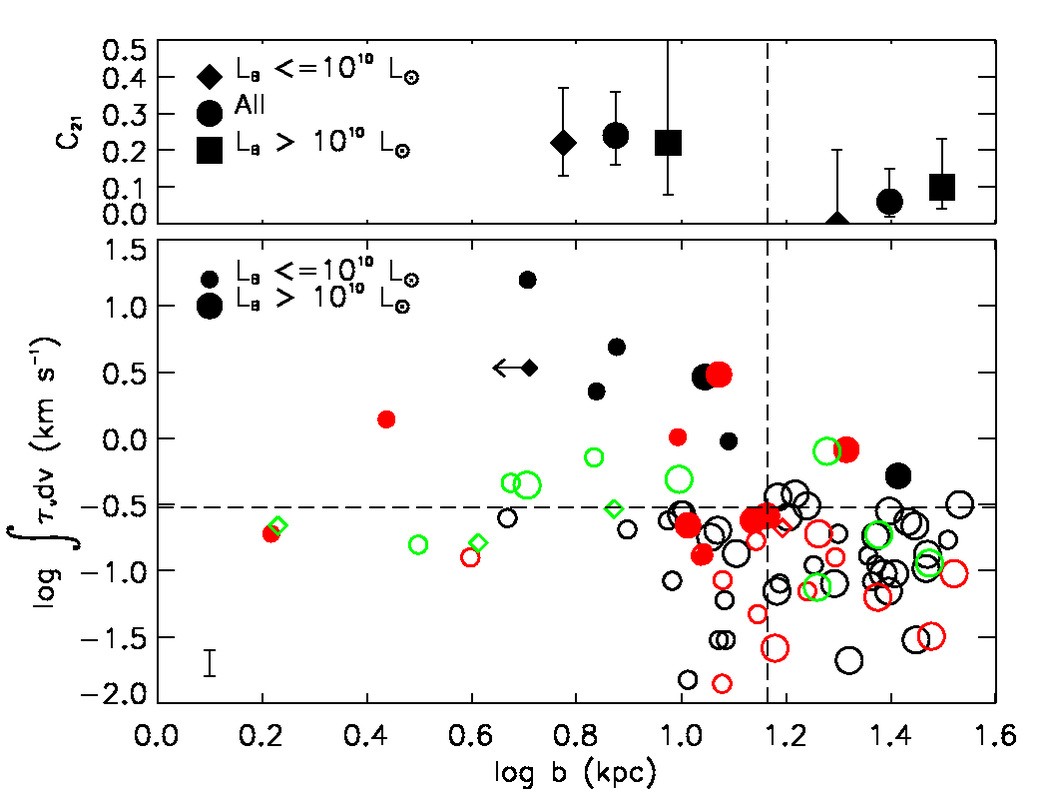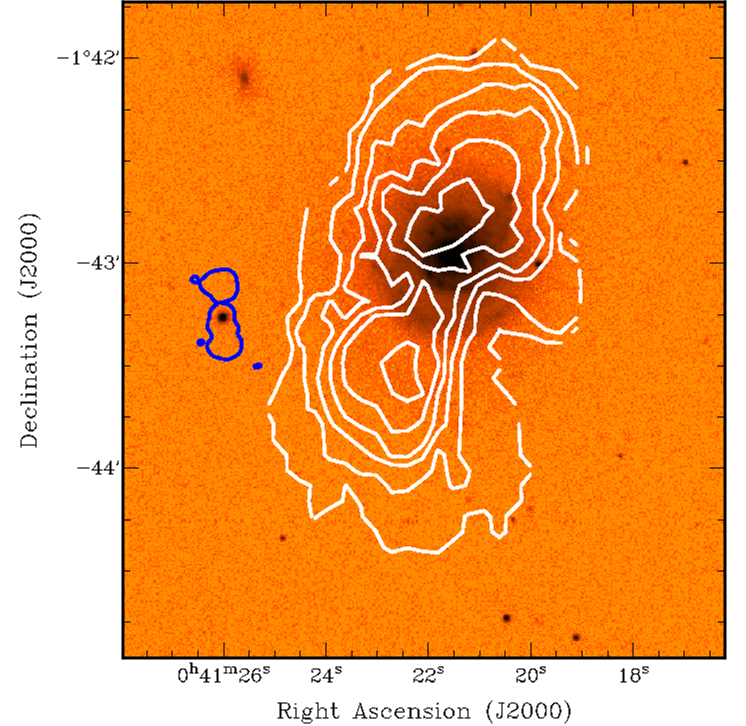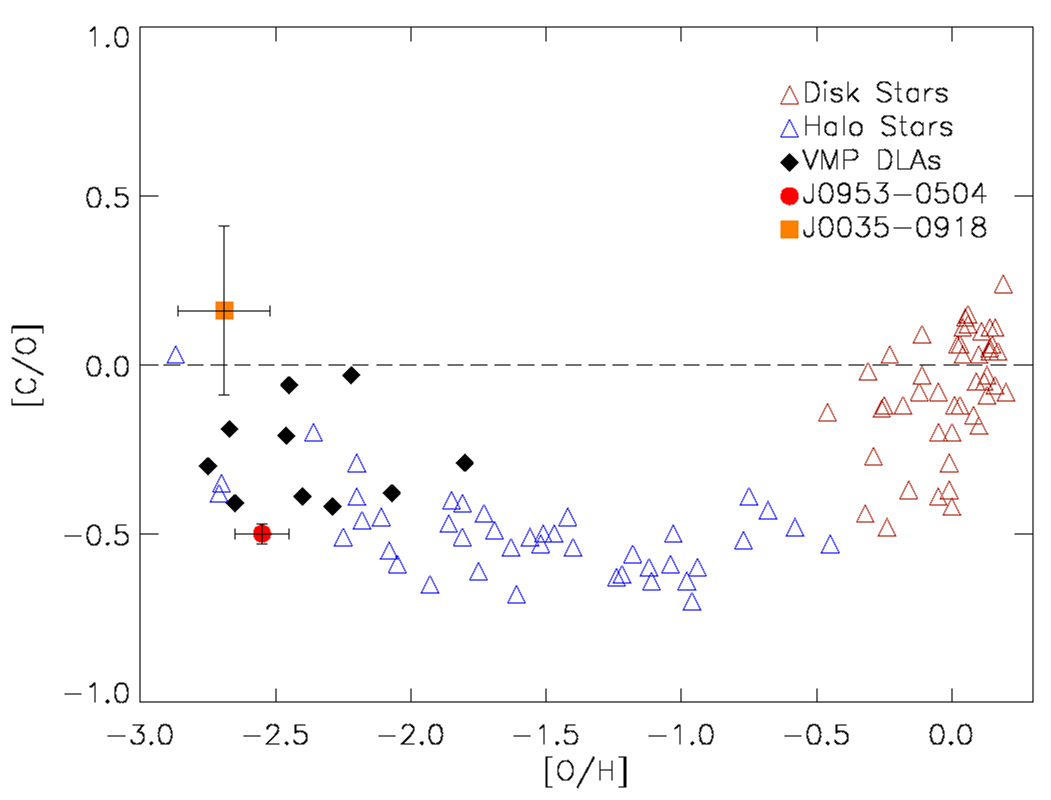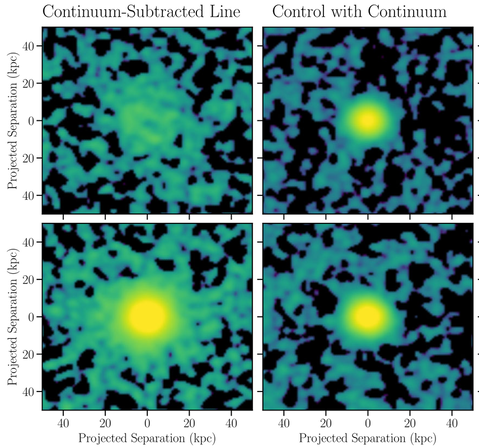
Metal line emission from z~1 galaxy haloes:
By stacking the MUSE cubes of ~600 galaxies from the MAGG (MUSE Analysis of Gas around Galaxies) and the MUDF (MUSE Ultra Deep Field) surveys, we characterize for the first time the average metal line emission from a general population of galaxy haloes at z=0.7-1.5. The MgII and [OII] line emission extends farther out than the stellar continuum emission, on average out to ~30 kpc. Additionally, the metal emission is found to depend on redshift, stellar mass, and galaxy environment. The results from stacked and individual detections of extended metal line emission around galaxies is published in Dutta et al. 2023.
|
Prevalence of neutral gas in centres of galaxy mergers:
We have found statistical evidence for the presence of large amount of neutral gas in the centres of low-z (z <= 0.2) galaxy mergers that host strong radio sources. Using HI 21-cm absorption study conducted with GMRT and VLA, we find that the incidence of HI absorption in central ~kpc regions of radio-loud galaxy mergers is ~84%. This is ~4 times higher than that found in low-z non-merging radio galaxies. The distribution of the neutral hydrogen column density among mergers is significantly different from that among non-mergers, with mergers giving rise to ~5 times stronger absorption on average. The fraction of redshifted absorption components (signature of gas inflows) is also higher among mergers by ~3 times. The results from this study can be found in Dutta et al. 2018 and Dutta et al. 2019. |
Metal-enriched halo gas across galaxy overdensities:
With a complete and deep view of the galaxy environment provided by MUSE optical and HST near-infrared data from the MAGG (MUSE Analysis of Gas around Galaxies) and the QSAGE (Quasar Sightline and Galaxy EVolution) surveys, we studied the distribution of cool, metal-enriched halo gas, traced by MgII and CIV absorption, around z<2 galaxies. We find that the cool, low-ionization gas is significantly affected by the environment, with 2-3 times more prevalent and stronger MgII absorption in higher overdensity group environments. We suggest that gravitational interactions taking place between galaxies in groups and hydrodynamic interactions within the group could lead to this enhancement (Dutta et al. 2020, Dutta et al. 2021).
Search for cold gas in strong MgII/FeII absorbers: We have conducted a survey of HI 21-cm absorption in 16 strong FeII systems (Wr(FeII 2600) > 1 Ang) at 0.5 < z < 1.5 selected from SDSS, using GMRT and GBT. We have detected six new HI 21-cm absorption and shown that HI 21-cm absorption arises on an average in metal rich and dusty systems (Dutta et al. 2017, MNRAS, 465, 4249). In addition, we have searched for HI 21-cm absorption in 11 strong MgII systems (Wr(MgII 2796) > 1 Ang) at 0.3 < z < 0.5 selected from SDSS. Our GMRT search has resulted in two new HI 21-cm absorption detections (Dutta et al. 2017, MNRAS, 468, 1029). |
|
Distribution of cold gas around low-z galaxies: We have carried out a systematic search of HI 21-cm absorption in a sample of 55 z < 0.4 galaxies towards radio sources at impact parameters less than 35 kpc, using GMRT, VLA and WSRT. We have studied the radial and azimuthal profiles of HI 21-cm absorption around low-z galaxies, and quantified the covering factor of HI 21-cm absorption as a function of various physical parameters. The results from our study are published as Dutta et al. 2017, MNRAS, 465, 588. Supplementary figures from our paper can be found below.
| |||||||
|
Structures in the HI gas around low-z galaxies: We have observed parsec- to kiloparsec-scale structures in the HI gas around two low-z galaxies. The results from our multi-wavelength studies of these two systems are published as Dutta et al. 2016, MNRAS, 456, 4209 and Dutta et al. 2015, MNRAS, 448, 3718. |
|
Physical conditions in z > 2 metal-poor DLAs: We have carried out a detailed high spectral resolution study using VLT-UVES of four z > 2 metal-poor ([Fe/H] < -2.0) damped Lyman-alpha systems (DLAs). Photoionization modelling of the metal-poor DLAs with CII* absorption shows that in situ star formation is required to explain the observed CII* cooling rate. Photoelectric heating by grains is not as effective as in the Milky Way and cosmic ray heating may be responsible for the observed excitation of CII*. The results from this study are published in Dutta et al. 2014, MNRAS, 440, 307. |

